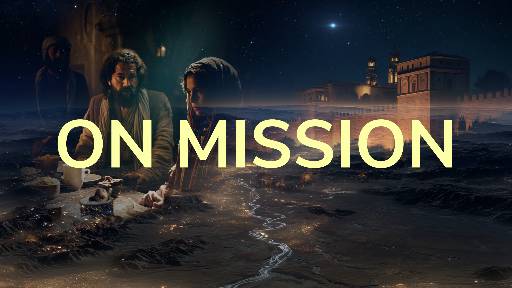-
The Council Of Chalcedon Series
Contributed by Keith Foskey on Nov 28, 2017 (message contributor)
Summary: Considered by many to be the last Ecumenical Council, how did the Council of Chalcedon affect the history of the early church and begin the rift which would ultimately become the Great Schism in 1054.
Church History: Examining the Creeds and Confessions of the Church Through the Ages and Why They Matter.
Lesson 5: The Council of Chalcedon
So far, in our study of church history we have seen:
An overview of the last 2,000 years of church history.
The creeds which are found within the Bible itself.
The early church documents called the Didache and the Apostles’ Creed.
The Council of Nicea and the Nicene Creed
Tonight, we are going to examine what would be recognized by many Anglicans and Protestants as the last ecumenical (world-wide) council of the church, the Council of Chalcedon.
History of the Council
In AD325, the first ecumenical council of the church was held in Nicaea.
It affirmed the full deity of Christ, that He was of the same substance of the Father, “begotten, not made”.
It had rejected the Arian heresy that Jesus was merely a creature, but instead affirmed Him to be the everlasting Creator.
However, this did not stop the Arian movement.
In fact, after Nicaea there was a resurgence of the Arian heresy.
It was made all the more worse when Constantine became lenient in regard to the Arians, and his son Constantius II actually sided with the Arians in opposition to those who held to the Nicene Creed.
Constantine even had the great Nicene proponent Athanasius exiled as a result of the conflict.
After Constantine’s death, Athanasius was allowed to return to his position, but was then exiled again by Constantius II.
In fact, in the life of Athanasius, he underwent at least 5 exiles and had to flee for his life on approximately six more times.
There arose a saying from this time period, “Athanasius Contra Mundum” - Athanasius Against the World.
Because of men like Athanasius, the Arians were unsuccessful in their attempts to subvert the truth about the deity of Christ.
This led to the Council of Constantinople in AD381, which upheld the teachings of Nicaea against the Arians and rejected the teachings of a new heretic Appolinaris, who taught that Jesus was not fully human, but rather that His divine nature had displaced His human mind and will.
After this, another heresy arose out of the teaching of Nestorius.
Nestorianism, as it became known, taught that Jesus had two separate natures and two wills, effectively making Him two persons sharing one body.
This teaching was condemned at the Council of Ephesus in AD431.
Ten years after this, Eutyches denied that Jesus had a truly human nature, and said that it had been absorbed by His divine nature.
Eutyches stressed the unity of Christ's nature to such an extent that Christ's divinity consumed his humanity as the ocean consumes a drop of vinegar.
It was this heresy, called Eutychianism, which led to the Council of Chalcedon in AD 451.
The council lasted less that one month, beginning October 8, 451 and concluding November 1 the same year.
The Decision of the Council
The Council of Chalcedon anathematized both those who taught that Jesus only had one divine nature and those who taught that He had a mixture of two natures.
It was essential to the council that the two natures of Christ be defined as being distinct, and unmixed, yet remaining fully unified.
By defining Christ as both fully human and fully divine, the Council had made it easier to define and identify error.
Groups that could not affirm both the full divinity and full humanity of Christ were considered unorthodox and heretical.
The council also ratified the creeds of Nicaea and Constantinople, and condemned the heresies of both Eutyches and Nestorius.
In addition to the theological focus on Christ, there were also 30 disciplinary canons established by the Council.
The Confession of the Council
The confession reads as follows:
Following, then, the holy Fathers, we all unanimously teach that our Lord Jesus Christ is to us One and the same Son, the Self-same Perfect in Godhead, the Self-same Perfect in Manhood; truly God and truly Man; the Self-same of a rational soul and body; co-essential with the Father according to the Godhead, the Self-same co-essential with us according to the Manhood; like us in all things, sin apart; before the ages begotten of the Father as to the Godhead, but in the last days, the Self-same, for us and for our salvation (born) of Mary the Virgin Theotokos as to the Manhood; One and the Same Christ, Son, Lord, Only-begotten; acknowledged in Two Natures unconfusedly, unchangeably, indivisibly, inseparably; the difference of the Natures being in no way removed because of the Union, but rather the properties of each Nature being preserved, and (both) concurring into One Person and One Hypostasis; not as though He were parted or divided into Two Persons, but One and the Self-same Son and Only-begotten God, Word, Lord, Jesus Christ; even as from the beginning the prophets have taught concerning Him, and as the Lord Jesus Christ Himself hath taught us, and as the Symbol of the Fathers hath handed down to us.

 Sermon Central
Sermon Central



